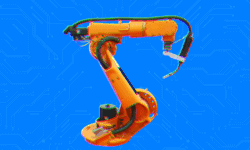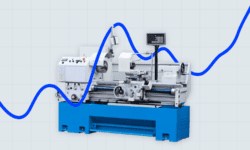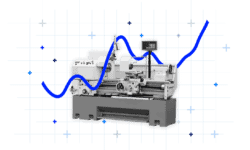ESG—environmental, social, and governance—practices are now ubiquitous in almost every industry. What started as little more than a passing fad has grown into one of the most integral components of most companies’ business strategies and investors’ investment decisions. The reason for this change?
As awareness of environmental, social, and corporate governance issues continues to grow on an individual, company, and government level, ESG has become a way to hold companies and nations responsible for their societal and environmental impacts. Today, companies face constant pressure to espouse ESG practices—from government and regulatory bodies, but also from their own consumers and investors. The companies that successfully and authentically integrate ESG into their strategies not only avoid legal and reputational repercussions, but also boost their competitive advantage, resilience, and short and long-term value creation.
In the manufacturing industry, ESG has always been a core topic. Manufacturing processes have historically been highly detrimental to the environment, with heavy air and water pollution, greenhouse gas emissions, and resource depletion. Beyond that, worker safety, supply chain management, and resource efficiency have all been major concerns.
For this reason, this industry stands to gain more than most others from successfully integrating ESG practices. And the opportunity has perhaps never been more ripe than it is now. With ESG issues top of mind for stakeholders and consumers, technology becoming increasingly central to business operations, and macroeconomic factors such as labor shortages to contend with, manufacturing companies now have the unique opportunity to leverage ESG not just to meet external demands, but also to further their own growth, profitability, and competitive advantage.
Below, we discuss some of the major shifts the manufacturing industry is currently experiencing in terms of ESG, who the ESG leaders in manufacturing are and what they’re doing right, and how you can set yourself up for success in this pivotal time.
ESG in Manufacturing: Key Trends
The following are some of the major ways ESG has been shaping the manufacturing industry in recent years, as well as how companies are moving toward ESG-led growth.
Smart Manufacturing and Sustainability
As the industry moves toward digital transformation, more and more companies are incorporating new technologies such as artificial intelligence (AI), virtual twins, virtual reality (VR), augmented reality (AR), cloud computing, and more into their operations, so as to stay competitive, improve productivity, and reduce long-term costs.
But one of the most unexpected effects of this digitization has been the opening up of new possibilities for increasing sustainability. Companies have realized that by integrating these new technologies that enhance their business operations, they can simultaneously hit ESG targets without much additional effort or resources needed.
Some examples of how digital technologies go hand in hand with ESG are:
- Better data utilization can be used to get clear on ESG shortcomings and find opportunities for minimizing their environmental impact
- Smart manufacturing technologies are the only way discovered to date to achieve zero waste or significant waste reduction
- Smart technologies can be used to decrease energy consumption, both in terms of gathering data about energy inefficiencies and in terms of new, smarter equipment and processes
Supply Chain Transparency and Ethical Sourcing
There has been growing scrutiny on manufacturing companies’ supply chain practices from stakeholders, as well as pressure to ensure ethical sourcing of raw materials, fair labor practices, and compliance with environmental regulations across their supply chains. This development is intricately tied with ESG.
Supply chains can have a substantial environmental impact, from raw material extraction to manufacturing processes and transportation. By increasing supply chain transparency, companies can identify their negative impacts and find ways to implement more sustainable practices. Both supply chain transparency and ethical sourcing are also critical for ensuring social responsibility, fair labor conditions, and worker safety.
These days, focusing on supply chain transparency and ethical sourcing is becoming industry-standard, as companies recognize that it’s not only important for ESG performance, but it’s critical for appealing to investors, meeting consumer expectations, and achieving better business outcomes.
Integration of Circular Economy Principles
ESG has also made a tremendous impact on how manufacturing companies are thinking about the lifespan of their products and materials, with many companies moving toward a circular economy model. This means extending the life of products through refurbishing, remanufacturing, and recycling—which reduces waste and lessens reliance on finite resources.
This, again, is a way of hitting ESG targets, while also driving sustainable growth. A circular economy helps companies increase their resilience, boost brand affinity, increase innovation, and drive new revenue streams—all while contributing to the net zero agenda.
Emphasis on Innovation
The evolution of ESG in manufacturing has ushered in an age of innovation for the industry. Whereas the manufacturing industry has historically been known as slow and resistant to change, ESG initiatives have been one of the main driving forces behind its recent transformation.
Manufacturers are leveraging advanced technologies such as IoT (Internet of Things), AI, blockchain, and advanced analytics to optimize resource usage, reduce their carbon footprint, and drive operational efficiencies.
They are providing workers with wearable devices and software, designed to make training faster and more efficient, which leads to less travel-facilitated carbon emissions and much greater production efficiency overall. They are also transforming their product design for sustainability—using fewer components, incorporating recyclables into packaging, and using modular design principles to facilitate repair and upgradeability.
All of these innovations are helping manufacturing companies stay competitive and resilient in face of potential future disruptions and turbulent markets—while also supporting ESG goals.
Addressing Labor Shortages
In the midst of persistent labor shortages in the manufacturing sector, ESG principles have been a guiding light for enhancing employee attraction, retention, and engagement. By focusing on the “S” of ESG, companies have transformed their approach to worker safety, health, and satisfaction.
ESG principles include ensuring safety and well-being for workers, facilitating a good work-life balance, providing growth and enrichment opportunities for workers, promoting a culture of diversity and inclusion, and demonstrating corporate social responsibility. By implementing various changes to abide by these principles, manufacturing companies can safeguard themselves against labor shortages, while also ensuring their employees are motivated to perform optimally.
Aligning with Customers’ ESG Goals
Some manufacturing companies are intricately tied with the consumer industry, as many of the products they create are sold to consumer companies—examples include General Electric, Siemens, and Unilever. Meanwhile, other manufacturing companies sell directly to consumers—examples include Apple, Nike, and Warby Parker. For both of those sets of manufacturers, the kinds of products they create depend on their consumers’ desires and demands.
As ESG remains a key consideration within the consumer industry, as well as top-of-mind for most individual consumers, this means manufacturing companies have to be much more aware of how the products they create align with their consumers’ own ESG goals. For example, a car manufacturer might look at creating electric vehicles not only because it will help them with their own ESG reporting, but because they are aware that consumers want a more environmentally friendly option and are therefore interested in purchasing an electric car. Similarly, a parts manufacturer that is aware of their consumer company’s ESG goals might use recyclable parts to better align with those goals.
ESG Leaders in Manufacturing
Among manufacturing companies, several stand out as being exceptionally committed to upholding ESG practices and successfully integrating ESG factors into their decision-making and business practices.
Nike
Fitness company Nike has long been a pioneer in ESG initiatives. Most recently, they have announced their 2025 goals under a campaign called Move to Zero—a journey toward zero carbon and zero waste, by focusing on carbon, waste, water, and chemistry.
Some of the key objectives of the campaign include reducing carbon emissions by focusing more on renewable energy sources, reducing waste by 10% per unit in manufacturing distribution centers and headquarters and sending zero waste to landfills (instead recycling, donating, or reselling used products), reducing freshwater usage by 25% per kilogram from textile dyeing and finishing, and finally adopting clean chemistry alternatives for ten priority chemistries across the supply chain.
“They were the first company to create a supplier code of conduct across environment, health, safety, and there’s one other, sustainability measure, and made that publicly available to the industry, and because of that, I think a lot of their practices with their finished goods manufacturers, as well as with their material suppliers are really industry-leading because they came from a bad place and they were initially forced into it and then became an industry leader because of it. I think they’ve made a ton of progress.”
– Former Director at Nike | Expert Call
Siemens
Siemens is the largest industrial manufacturing company in Europe and has long been a proponent of clean energy. In 2015, they were the first global industrial company to commit to achieving carbon neutrality by 2030.
More recently, Siemens has taken its ESG commitment to the next level with their new DEGREE framework that stands for decarbonization, ethics, governance, resource efficiency, equity, and employability. Siemens also recently appointed Judith Weise—one of the top Chief Sustainability Officers in Europe—as their Chief People and Sustainability Officer.
“They have a lot of intelligent technology for building. They have the wind power production. Of course, they have the charging to cars and vessels for all kind of batteries…They are focused on the battery, the [volt] Fluence batteries. It’s really a focus to make sure you can store the energy. They’re focused to produce it, to transport it, and to store it.”
“In transportation, they are looking a lot in electrical buses, trains, charging all kind of cars…If you talk power-to-x, then it’s totally located in Siemens Energy, there’s an independent company in the Siemens Group.”
– Former Director, Siemens| Expert Call
Unilever
The multinational consumer goods company was awarded a score of 90 out of a 100 by the S&P Dow Jones Sustainability Index in 2020, based on 27 ESG metrics. Unilever’s current objective is to halve its environmental footprint by 2030, as outlined in their Sustainable Living Plan. With the appointment of Hein Schumacher as the CEO in July 2023, Unilever is now even more committed to hitting sustainability targets.
“I think the approach from the new CEO, which is much more about focusing on the sustainability commitments but breaking them down into year-on-year targets, is the right thing to do for sure because it will drive focus behind the organization.”
– Former VP, Unilever | Expert Call
L’Oreal
L’Oreal has been a leader in terms of ESG practices within the beauty industry for many years. One of the key steps they’ve taken to further ESG initiatives is developing a new product impact labeling system, which is designed to enhance transparency, as well as educate consumers on the true meaning and value of sustainable product alternatives. This is absolutely key for creating lasting change in the industry—consumers have many preconceptions and beliefs about beauty products and their packaging, and some of these beliefs are directly at odds with choosing the more sustainable option.
For L’Oreal, the labeling system is “a really critical step in helping consumers understand what a more sustainable choice is, what a more circular product is, and really start to engage them and educate them so that eventually we can ask them to change their behavior when it comes to consumption,” according to Nicole Cerroni, VP of Sustainability at L’Oreal.
“L’Oréal specifically announced their sustainability commitments back, and I think it was 2019 or 2020 that “By year 2025, we want to do this.” By year 2030, which is their ultimate goal, they want to be completely carbon neutral and all these other things. They’ve really made an effort, and especially if you look at brands like Kiehl’s with their refillable packaging. KeraSoft now does that.
Not everybody sees that or knows that. That’s why they also don’t shrink-wrap their products anymore. It’s a lot of added plastics that go into the environment that do nothing. To a consumer looking on the shelf, it’s like, “Well, that all looks beautiful [inaudible] the plastic wrap,” but they don’t understand the implications of that. I think L’Oréal has done a tremendous job on that front. I think they could do more about advertising it.
I think that’s a hard thing when you are a giant. Not all things carry the same weight of importance. I do think that they’ve done a really good job of being transparent with all their things, manufacturing, solar power. Even in one of their plants on the East Coast, it’s all indigenous plants that they brought back. They have bees that are native to the area. I think if you’re going to do something, you do it well, and they put a lot of resources and staffing behind it.”
– Former AVP, L’Oreal | Expert Call
Nestlé
Global food and beverage company Nestlé is another ESG leader in their space. In 2020, they released a detailed plan for halving their greenhouse gas emissions by 2030 and achieving net zero by 2050. Most recently, they announced that they are moving away from carbon offsets, in favor of focusing on actual emissions reductions in their operations and value chain—which is expected to be a much more effective way of reaching their net-zero goals.
“Right. Sustainability, as you rightly said, is high on the agenda and Nestlé is putting in the resources behind it. Right from internally putting in specific themes, structures within the organization with other global level, as well as with each of the market levels. It is an investment and a commitment behind sustainability. Now, of course, there are ongoing high-profile issues, which you rightly pointed out around cocoa, around palm oil and there is an entire plan around it. It’s not something which can be resolved and it can be solved in one day.
Nestlé has put in very specific plans behind it to work within the communities to make sure that is understanding of what it is. There are plans to work around it as well as, as I said, working on specific recipes in [inaudible] products around taking into account the sustainability aspect. Packaging, there’s a whole lot of focus on plastic, single use plastics that are targets given to each of the regions, markets, businesses in terms of movement towards more sustainable packaging. Of course, it comes at a pricing and a cost, but then the consumers are evolving as well and they do understand the importance of sustainable packaging. It’s easier.”
– Former Regional Unit Head, Nestlé | Expert Call
Keeping Tabs on ESG in Manufacturing
With new regulations, technologies, and corporate ESG initiatives emerging each quarter, staying on top of every development is crucial to developing a solid ESG strategy and staying ahead of the competition. To do so, you need a tool that aggregates leading industry information, all while helping you cut through irrelevant noise and surface the insights you need faster.
By incorporating an AI-driven market intelligence platform in their market intelligence efforts, our clients can easily access broker research, company documents, expert calls, regulatory documents, and more from over 10,000 premium, proprietary, public, and private sources. And with customizable dashboards and real-time alerts, you will always be first to know of any developments in the manufacturing ESG space.
Discover why AlphaSense is the leading market intelligence platform for manufacturing.
Start your free trial with AlphaSense today.




